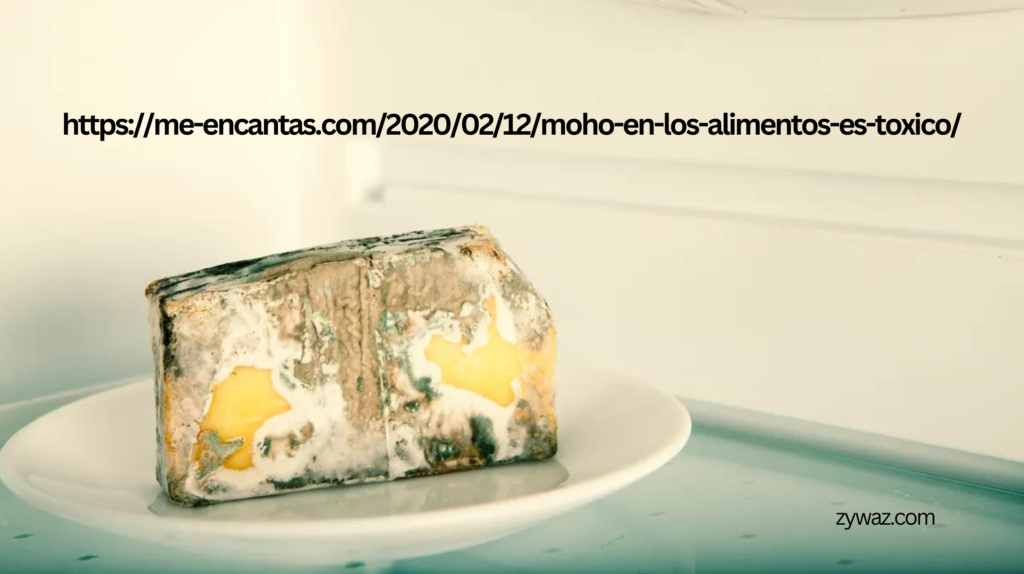What is mold, and why does it grow on foods?
https://me-encantas.com/2020/02/12/moho-en-los-alimentos-es-toxico/ :
Mold is a kind of fungus that pervades every nook and corner of our surroundings.It grows at a warm and damp place. It grows on food when the spores present in the air fall on its surface and start to grow on extraction of nutrition from it. While it forms a part of the environment, mold growth on food may be hazardous to human health. In the following article we try to discuss the nature of mold, the associated dangers it possess, and ways to safely dispose of moldy foods.
Dangers to Health from Intake of Moldy Foods
The intake of mold contaminated food can result in a variety of diseases, which run from very soft allergic reactions to severe respiratory problems and mycotoxin poisoning. Now what are mycotoxins? Mycotoxins are metabolic products of particular molds; reportedly, they are responsible for food-borne illness. Except for acute intoxications, they have been associated with long-term harmful effects on health, including hepatotoxicity and carcinogenicity. Knowing hazardous mold and how to avoid its growth, together with the symptoms, is key to one’s safety.
How to Identify Moldy Food: When to Keep and When to Toss
Not all molds are hazardous, though it is hard to tell which mold is harmful or not. Molds on some common food stuff like bread, cheese, and fruits are very common. This section provides information on how a person can examine foods for mold ; it also contains advice on when a part may be cut off and when the whole item must be thrown away.
Identifying and Preventing Moldy Food: Essential Tips for Your Kitchen
Types of Food That Grow Moldy
Foods go moldy easier than others simply because of their water content and storage conditions. Such common foods that usually form molds are milk products, fruits, vegetables, and bread. Knowing why these foods go moldy will arm you with information to try and avoid such occurrences from happening in your kitchen.
Prevention of Mold Growth on Food
Food mold prevention is important both for the safety of the food and towards the realization of a longer shelf life. Proper storage methods, including refrigeration or airtight containers, and good housekeeping in the kitchen reduce the risk of mold. In this line of thought, here are some helpful tips to avoid the growth of mold, keeping your foods fresh and safe:
What to Do When You Accidentally Eat Moldy Food
Anyone can accidentally consumes some moldy food at times. These immediate measures will be useful in minimizing the health risks which you may be exposed to. This section will advise you what to do in case you, or another, consumed food with mold. This shall include monitoring the symptoms and if one needs to attend a hospital.
FAQs about Mold on Food
https://me-encantas.com/2020/02/12/moho-en-los-alimentos-es-toxico/
Q: Is all mold on food harmful?
A: Not all molds are harmful; however, it is difficult to know which molds are safe and which are toxic. It is usually better to err on the side of caution and discard moldy food rather than trying to salvage it and risking illness.
Q: Can I just cut off the moldy part and eat the rest?
A: For some hard foods, for example, cheese and firm fruits, trimming off the moldy part with a generous margin is safe, but with soft foods like bread and yogurt, penetration may be deeper, so better to scrap the whole item.
Q: What are the symptoms of mold exposure?
A: There are mild allergic reactions to molds, which create discomfort through sneezing and skin irritation; serious respiratory issues; and mycotoxin poisoning, causing nausea, vomiting, and even liver damage.
Q: How can I help prevent the growth of mold on foods?
A: Store foods safely: Keep perishable foods refrigerated, store them in covered containers and clean up crumbs and spills. Clean your kitchen often. Throw out foods with mold.
Q: Can I safely eat cheese that has mold growing on it?
A: Yes, some cheeses, such as blue cheese, are processed with safe molds and can be consumed. If there’s mold growth on a non-mold cheese, it usually is better to discard it.
Conclusion: Protecting Food Safety and Health
Food mold is the most common and very dangerous when not handled properly. Be enlightened on what mold is all about, how to know when your food is already unfit for consumption, and ways of avoiding this kind of danger. Remember, when in doubt, always throw the moldy food to keep you and your loved ones safe. See More…

